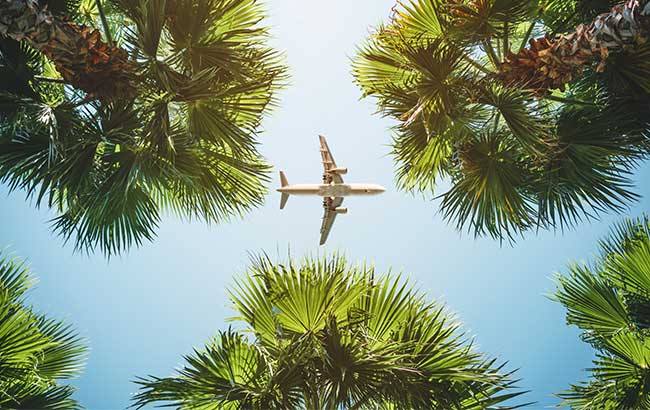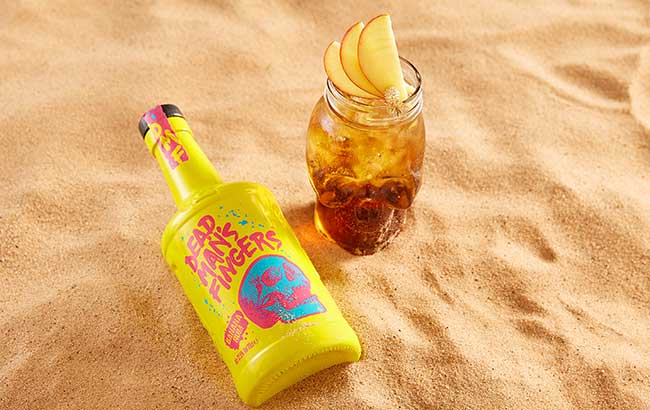How premium rum is boosting GTR’s recovery
Before Covid-19 grounded the world’s aeroplanes, rum was set to make good on its assault on the travel retail sector. Now, as things open up, the category is poised to recapture that momentum.

*This feature was originally published in the December 2021 issue of The Spirits Business magazine.
As passengers return to airports, rum producers are taking stock after a challenging time, while recognising an opportunity to be at the forefront of what might be a new dawn for global travel retail (GTR).
All spirits categories have felt the effects of Covid‐19 travel restrictions since early 2020, but for rum, whose star was rising, the timing must have felt particularly unfair. But that strength has helped it weather the storm, and should stand it in good stead as the channel revives.
When total spirits volumes plummeted in travel retail in 2020 by 72%, according to IWSR Drinks Market Analysis, rum volumes fell at a similar rate – by 71%. Value dropped more, comparatively, with a 70% decrease in rum, versus a decline of 65% in overall travel retail spirits. In domestic markets, meanwhile, rum dropped by 8% in volume in 2020, and by just 4% in value. But the IWSR predicts optimistic figures.
GTR volumes for the category are set to grow by a 30% compound annual growth rate from 2020 to 2025, with value predicted to increase by 33%. Total spirits in GTR are expected to rise by 31% and 28% in volume and value, respectively, in the same period.
This gives confidence not only for the category’s overall promise, but for its move towards more premium products. It also reinforces the importance of GTR to rum, as well as the role the category can play in the channel’s recovery.
Lisa McCann, brand director at Pernod Ricard Global Travel Retail, which produces Havana Club and Malibu rum liqueur, confirms this. “Compared with other categories, rum is relatively small in GTR,” she says. “But it is growing and premiumising. It’s a small but mighty category.”
Bacardi GTR managing director Vinay Golikeri adds: “Travel retail is a strategically important, brand‐building channel for the Bacardi portfolio of premium spirits brands.”
The channel has potential for new entrants too. “For a brand like Ron Inmortal, which is still very new, travel retail helps serve as a billboard,” says Luis Fernandez, president of Yotomo Imports, which recently launched the ultra‐premium Colombian rum.
This is true for other spirits too, but rum has specific advantages in GTR. Fernandez says the channel’s importance is “especially true in markets like the Caribbean and South America because consumers who have just visited the region, whether for business or holiday, have most likely enjoyed a rum cocktail during their travels, and they’re looking to take a bit of that experience home with them.”
McCann agrees. “Travellers want to bring a souvenir back, and purchase a bottle they can’t find at home,” she says.
Commenting on La Hechicera’s success in its native Colombian duty free market, co-founder Laura Riascos says the brand “is well placed to capitalise on the desire to gift something that best represents the country where they have been”.
Riascos is optimistic about the channel’s resurgence. “Despite it being negatively affected by the pandemic, we are seeing a faster recovery than expected; travellers are looking to resume pre‐pandemic dynamics as tourism picks up momentum,” she says.
Eamon Prunty, head of GTR at Halewood Artisanal Spirits, which has rum brand Dead Man’s Fingers in its portfolio, believes some categories will be more resilient than others. “Rum is likely to see a boost as a result of the huge rise in popularity it saw on a domestic level,” he says.

Prunty says the strategy for attracting new consumers is the same as always. “Innovation and pricing strategy will be crucial, as will effective marketing and consumer engagement,” he says.
But some rum brands are identifying digital as being more important than before in GTR.
“While tastings are a crucial part of our activation strategy, we will also need to use more technological tools as well as audiovisual and digital content to give consumers a safe, easy and exciting experience,” says Diplomático rum’s global marketing director, Edouard Beaslay.
“Shops have an opportunity to adapt to a physical and digital environment, where customers can use technological solutions like augmented reality, click and collect and video displays to make their experience safer and more enjoyable,” he adds.
Bacardi, too, has recognised this. “By far the biggest shift in consumer mindset, and one that Bacardi believes is a huge opportunity for travel retail, is digital adoption,” says Golikeri. “This new behaviour among consumers means there is now an expectation for digital to play an essential role in their retail experience.”
Move to premium
More generally, rum’s ongoing move towards a more premium offering is of particular relevance to travel retail, and the way in which it engages consumers. “In this complex and highly concentrated business it is important for the super‐premium rum category to increase its exposure,” says Beaslay. “Operators need to dedicate more space to the fast‐growing category of super-premium rum so it can compete with other premium dark spirits, like whisky or Cognac.”
There’s a practical consideration too. “Shelf space is limited in duty free, so retailers are always looking to maximise that real estate,” says Fernandez. “Ultra‐premium rums that are characteristic of the regions where they’re produced are perfectly positioned.”
Brands are therefore focusing on their more premium offerings to attract consumers. Appleton Estate made its commitment to the channel clear recently with a GTR relaunch, complete with new packaging, as well as two new premium products.
Bacardi, meanwhile, is adapting its approach with contemporary drinking trends in mind. “Lockdown has sparked a world of discovery and a trend for experimentation,” says Golikeri. “This gives us an opportunity in travel retail beyond just selling products, but also to create unforgettable experiences and inspiration for shoppers to take back to their home cocktail making.”
Halewood’s Prunty agrees: “The trends in the rum category are reflective of those on a domestic level. We know consumers became more experimental with their drinks choices during the pandemic and are continuing to look out for new and exciting flavours.”
After such a challenging time, trends such as these suggest that categories such as rum might not only return to normal in GTR, but have some new opportunities ahead too.
Related news
Cocktail stories: Speed Bump, Byrdi
